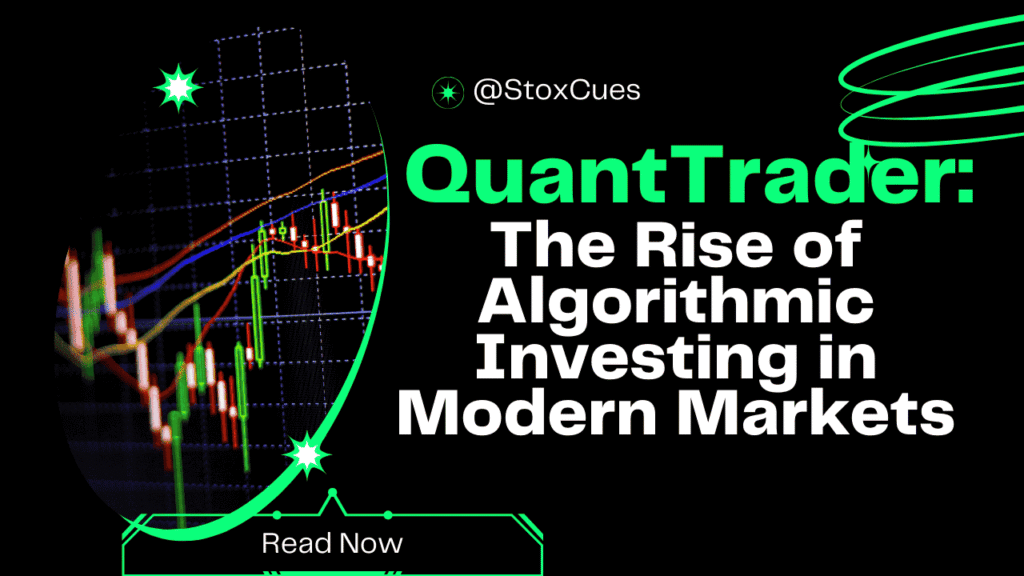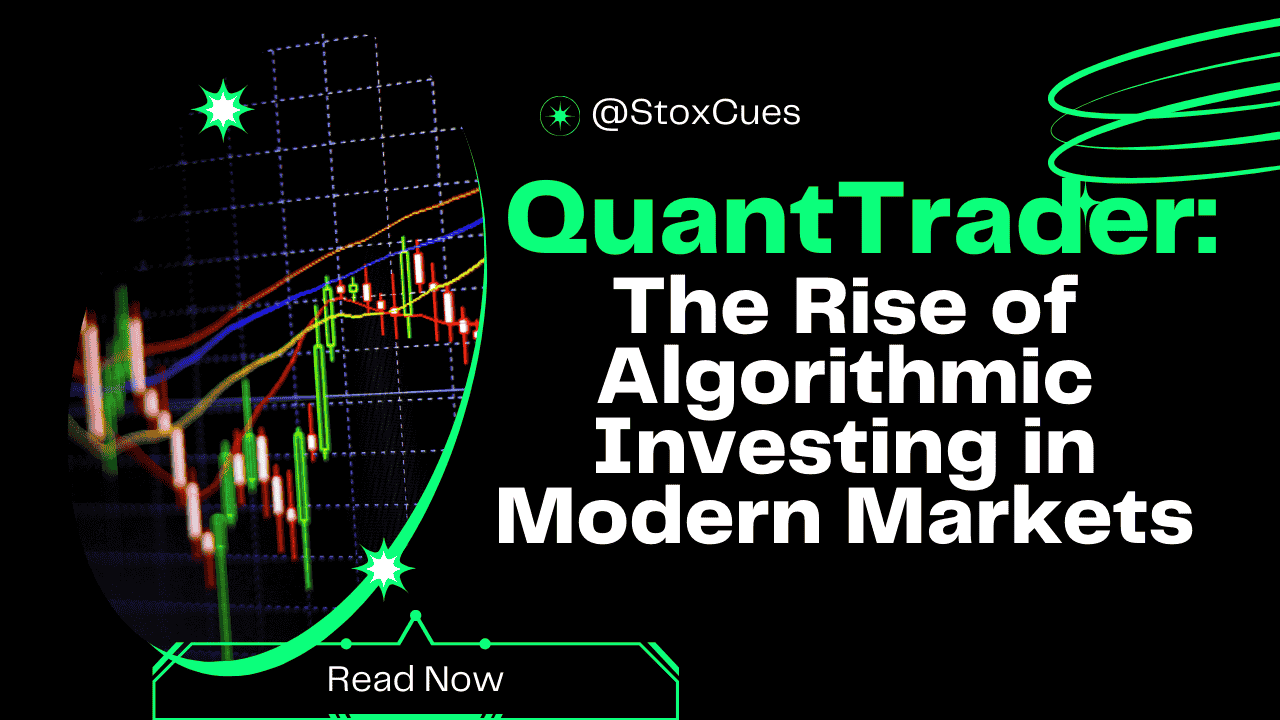Table of Contents
- Introduction
- What is Quantitative Trading?
- The Evolution of Quant Trading
- Key Components of a Quantitative Trading System
- Popular Strategies in Quantitative Trading
- Data: The Lifeblood of Quantitative Analysis
- Tools and Technologies for Quant Traders
- Risk Management and Backtesting
- The Role of AI and Machine Learning
- Challenges in Quantitative Trading
- Becoming a Quant Trader: Skills and Education
- Future Outlook of Quantitative Trading
- Conclusion
1. Introduction
The financial markets have undergone a massive transformation in recent decades. From the bustling floors of stock exchanges to the quiet hum of server racks running complex algorithms, the nature of trading has changed. Today, a significant portion of trading volume on major exchanges is driven by quantitative strategies—systems that rely on mathematical models and automated decision-making. In this article, we delve deep into the world of quantitative trading, or “quant trading,” and explore how modern traders harness data and algorithms to beat the market.

2. What is Quantitative Trading?
Quantitative trading is a method of trading that utilizes mathematical models, statistical techniques, and computational tools to identify and exploit trading opportunities. Unlike discretionary trading, which relies on human judgment, quant trading depends on historical data, predefined rules, and automation to make trading decisions.
Quantitative trading is used in various asset classes, including equities, futures, options, currencies, and cryptocurrencies. It enables traders to process vast amounts of data and execute trades at speeds and volumes far beyond human capability.
3. The Evolution of Quant Trading
Quantitative trading has its roots in academic finance, where researchers developed models to explain and predict market behavior. Over time, these models found their way into the real world through hedge funds and proprietary trading firms. The rise of electronic markets in the 1990s accelerated the adoption of algorithmic strategies.
Key Milestones:
| Year | Milestone |
|---|---|
| 1970s | Emergence of modern portfolio theory and CAPM |
| 1980s | Rise of statistical arbitrage and the first quant hedge funds |
| 1990s | Widespread adoption of electronic trading platforms |
| 2000s | Growth of high-frequency trading (HFT) |
| 2010s | Introduction of machine learning and AI in trading |
| 2020s | Democratization of quant tools and rise of retail algotraders |
4. Key Components of a Quantitative Trading System
To build a robust quant trading system, traders must integrate several essential components:
4.1. Strategy Development
This involves identifying and formulating the trading hypothesis. Strategies can be mean-reverting, trend-following, or based on statistical relationships.
4.2. Data Acquisition
Access to clean, high-quality data is critical. This includes historical prices, order book data, economic indicators, and alternative data sources.
4.3. Signal Generation
Using statistical models, traders identify potential entry and exit points. Signals are derived from patterns, correlations, or predictive models.
4.4. Execution System
Once a signal is generated, trades are executed using low-latency systems to ensure favorable pricing and minimal slippage.
4.5. Risk Management
Effective risk controls, such as stop losses, position sizing, and exposure limits, are essential to protect the portfolio.

5. Popular Strategies in Quantitative Trading
Quant traders employ a variety of strategies, each with its own risk-return profile:
| Strategy | Description | Suitable Assets |
|---|---|---|
| Statistical Arbitrage | Exploiting mean-reverting relationships | Equities, ETFs |
| Momentum Trading | Riding price trends | Commodities, FX |
| Market Making | Providing liquidity and earning the spread | Options, FX |
| Sentiment Analysis | Using news/social media data | Equities, Crypto |
| Event-Driven | Trading around earnings, mergers, etc. | Stocks, Derivatives |
6. Data: The Lifeblood of Quantitative Analysis
The success of a quant strategy heavily depends on data. There are three main types of data used:
- Market Data: Price, volume, and order book data.
- Fundamental Data: Earnings, financial statements, macroeconomic data.
- Alternative Data: Satellite imagery, web traffic, social media sentiment.
Data must be cleaned, normalized, and adjusted for corporate actions before it can be used in models.
7. Tools and Technologies for Quant Traders
Modern quant traders leverage a variety of tools to build and deploy their strategies.
Programming Languages:
- Python: Popular for its libraries and flexibility.
- R: Favored for statistical modeling.
- C++: Used for low-latency execution systems.
Libraries and Platforms:
| Tool | Use Case |
|---|---|
| Pandas, NumPy | Data manipulation |
| Scikit-learn, XGBoost | Machine learning |
| Zipline, Backtrader | Backtesting |
| MetaTrader, Interactive Brokers API | Execution |
8. Risk Management and Backtesting
Risk management ensures a strategy can withstand market volatility and avoid catastrophic losses. Common techniques include:
- Sharpe Ratio: Measures risk-adjusted return.
- Max Drawdown: Largest peak-to-trough loss.
- Value at Risk (VaR): Estimates potential loss under normal market conditions.
Backtesting involves running the strategy on historical data to validate its effectiveness. Proper backtesting should include slippage, transaction costs, and realistic constraints.
9. The Role of AI and Machine Learning
AI and machine learning (ML) are revolutionizing quant trading by enabling more complex pattern recognition and adaptive models.
Applications Include:
- Predictive Modeling: Forecasting price movements.
- Clustering: Grouping similar assets.
- Natural Language Processing: Extracting insights from news and tweets.
- Reinforcement Learning: Optimizing strategies through trial and error.
However, ML models are data-hungry and risk overfitting, making rigorous validation essential.
10. Challenges in Quantitative Trading
Despite its potential, quant trading comes with significant hurdles:
- Data Quality Issues: Inaccurate or missing data can skew results.
- Model Overfitting: Strategies that work on past data may fail in live markets.
- Execution Risk: Slippage and latency can erode profits.
- Regulatory Compliance: Navigating evolving regulations and reporting standards.
- Infrastructure Costs: High-performance systems and data feeds are expensive.
11. Becoming a Quant Trader: Skills and Education
To succeed in quant trading, one needs a unique blend of skills:
| Skill Area | Details |
|---|---|
| Mathematics | Probability, statistics, linear algebra |
| Programming | Python, C++, data structures |
| Finance | Market structure, instruments, regulations |
| Machine Learning | Supervised/unsupervised models, neural networks |
| Data Engineering | APIs, SQL, data wrangling |
Recommended Education Paths:
- Bachelor’s/Master’s in Math, Physics, CS, or Finance
- MOOCs and bootcamps (e.g., Coursera, QuantInsti)
- Internships or research projects in finance or data science
12. Future Outlook of Quantitative Trading
Quantitative trading is poised for continued growth, driven by advances in technology and data availability. Trends to watch include:
- Increased Adoption by Retail Traders: Tools like Alpaca and QuantConnect are lowering barriers.
- Real-Time ML and Adaptive Strategies: Strategies that learn and evolve in real time.
- Integration with DeFi and Crypto: Blockchain data offers new opportunities.
- Ethical and Regulatory Focus: Ensuring transparency and fairness in algorithmic systems.
13. Conclusion
Quantitative trading has become a cornerstone of modern financial markets. As technology continues to evolve, so too will the strategies and tools used by quant traders. Whether you’re a seasoned professional or an aspiring retail investor, understanding the foundations of quant trading opens the door to a powerful, data-driven approach to investing. With the right mix of knowledge, tools, and discipline, anyone can begin their journey into this exciting and fast-paced world.



